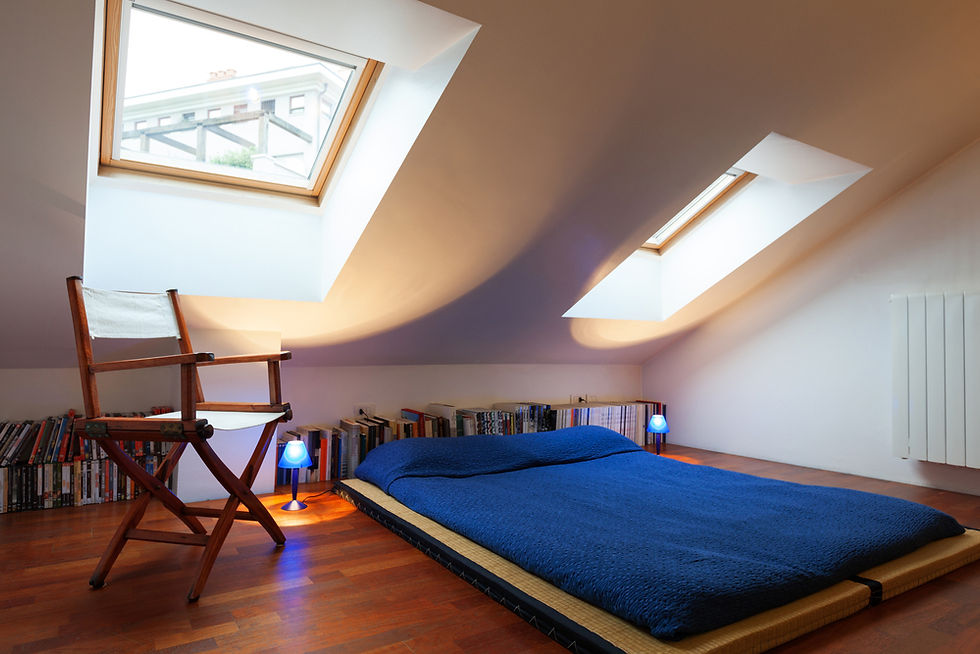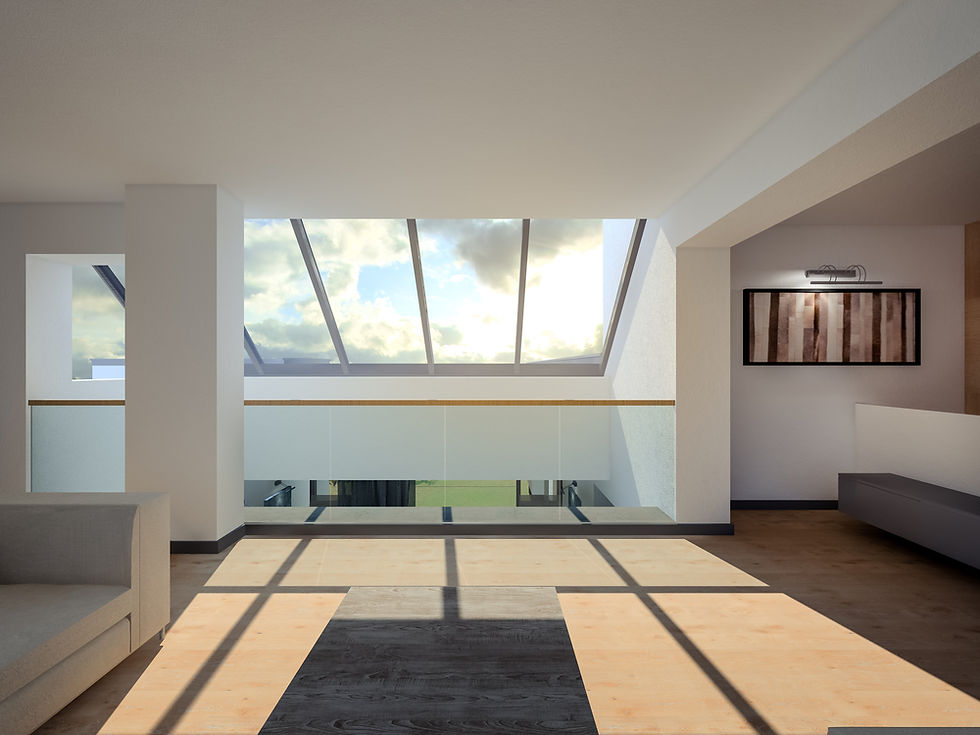Exploring Skylight Design Trends for Melbourne Homes
- Anna Wrench
- Sep 10
- 5 min read
Natural lighting is one of the most sought-after characteristics of modern home signs. In Melbourne, where the climate is known for a moment's unexpectedness, quickly changing to light up the inner parts, improve energy efficiency and increase the overall environment in their places of residence to surround the owners of the next house. But skylights are no longer just ordinary skylights. They have evolved in stylish architectural features with innovative designs, which reflect both functionality and modern aesthetics.
Maximising Natural Light with Larger Skylights
One of the largest skylights design trends in Melbourne Homes is a large skylights and boulders. Instead of small, boxy openings, the owners of the house choose the flood interior with a large skylight with a statement with the daylight.
Open-plan living areas – overcharged skylights can make the kitchen, living room and dining room feel light and more detailed.
Minimal artificial lighting – with the continuous cloud days with Melbourne reduces large skylight addiction of electric lighting and reduces the energy bills.
Dramatic focal points – large skylights are not just in light; They also add a "wow factor" to the design of the ceiling.
To rebuild those periods, large skylights are carefully integrated into roof structures to maintain cultural heritage appeal by connecting a modern touch to a modern feel.

Smart Skylights with Automated Features
Technology is reshaped skylight -design, and homeowners in Melbourne embrace smart skylights. These skylights are equipped with sensors and remote-control functions and offer convenience and energy efficiency.
Automatic opening and closing – skylights that open automatically when the indoor air heats up or filled ventilation improves ventilation without manual effort.
Rain sensors – Melbourne's unpredictable rain showers are no longer a concern. Smart skylights are automatically closed with the first sign of rain.
Remote and app control – home owners can control skylights from smartphones, making them perfect for difficult to access places.
With sustainability and comfort high on the elderly, smart skylights quickly become a must-from in modern Melbourne houses.
Frameless and Minimalist Skylight Designs
Minimum aesthetics dominate internal design trends, and skylights are no exception. Promotal skylights or designs with ultra-slank frame create a spontaneous form that allows maximum light without visual disorder.
Sleek appearance – Mix the frameless skylights into the ceiling for a clean, modern finish.
Perfect for modern builds – these skylights complement the popular minimal, industrial and Scandinavian induced interiors of the Melbourne restaurants.
Greater connection to the outdoors – with less barriers, providing frameless skylights uninterrupted views of the sky, trees or stars at night.
Minimal skylights are suitable for both urban townhouses and expanding suburban houses, makes sense.
Skylight Placement for Zoned Lighting
Another growing trend is a strategic location of skylights to achieve zonded lighting. Instead of installing only skylights in central regions, designers are carefully in position to increase them specific places.
Examples include:
Kitchen islands – Skylights directly natural task lights over the island, making cooking easier and more fun.
Hallways and staircases – often dark and underlying, these places that are alive with strategically placed skylights.
Bathrooms – Skylights above showers or bathtubs allow for privacy while creating a spa-like atmosphere.
This trend moves toward the designs of the thoughtful, functional home of Melbourne, where each detail improves the lifestyle.
Energy-Efficient Skylights with Glazing Technology
With increasing awareness of increasing energy costs and stability, energy -roared skylights are a top priority for several homeowners in Melbourne. Modern glass technology has transformed skylights into environmentally friendly assets from potential heat yarns.
Double or triple glazing – prevents heat loss in winter and reduces heat increase in summer.
Low-E coatings – reflects the heat so that the heat can pass and keep the interior comfortable.
UV protection – protects advanced glass furniture, floors and artwork against sun damage.
Energy-capable skylights not only reduce bills, but also match Melbourne's growing trend against permanent life.
Tubular Skylights for Compact Homes
The urban spread of Melbourne has increased compact houses, townhouses and apartments, where natural light is often limited. This has promoted the popularity of pipe windows.
Space-saving design – tubular skylights use reflective pipes to direct daylight in small or window-free rooms from the ceiling.
Perfect for bathrooms and pantries – these areas often lack natural light, and a pipe window provides an efficient, cheap solution.
Even light distribution – tubular skylights spread equally without causing hard glare.
This trend makes natural light available even in houses with limited roof placement.
Skylights as Architectural Statements
For many homeowners in Melbourne, skylights are not only practical they are architectural centresses. Designers incorporate bold skylights and placements to create wonderful visual effects.
Angled skylights – are installed at unique angles to capture specific ideas or maximize light at a specific time of day.
Clustered skylights – many skylights are together groups that form dramatic light patterns and shade.
Atrium-style skylights – Large, continuous glass panels transform living spaces into light-filled sanctuaries.
These statements are especially popular in luxury homes and renewal where design innovation is important.

Blinds and Shading Options
While skylights are excellent for natural light, too much sun can sometimes cause dazzling or overheating. The last trend is the connection of skylights with integrated blind and cinematography systems.
Motorised blinds – controlled with remote control or apps, allow easy adjustment of light levels.
Solar-powered blinds – energy-capable blinds driven by the sun.
Blackout options – perfect for the bedroom where complete darkness is required at night.
The scouring systems give the homeowners more control over rest, making skylights versatile for each room.
Skylights for Indoor-Outdoor Connection
Ceiling windows are used to blur inside and outside the house, with the owners of Melbourne clamps outdoors alive.
Skylights in alfresco areas – installing skylights over Payto or Outdoor Kitchen create bright, welcome places.
Garden integration – skylights that affect visual frames of trees, plants or green walls, bring nature indoors.
Day-to-night transition – Skylights allow stargazing at night, creating a unique ambience for entertaining.
This design shows the lifestyle of the trend Melbourne, where the outdoor life is an essential part of the house.
Sustainable Materials and Eco-Friendly Choices
Beyond glass, the owners of the house are looking for a permanent skylight solution. Environmentally friendly skylights are made with recycled materials, constant acid frames or low power production processes.
The pair of skylights with other green home upgrading-like solar panels, energy-efficient insulation and inactive cooling of the design-a general durable home that reflects Melbourne environmentally conscious values.
Conclusion
Skylight design in Melbourne is growing rapidly, combination style, technology and stability. From large frameless designs to smart skylights with rain sensors, today's alternatives are far ahead of simple skylights. Homeowners embrace skylights not only for natural light, but also as architectural features that improve comfort, energy efficiency and lifestyle.
Whether you renovate a cultural heritage in Carlton, construct a smooth townhouse in Brunswick, or upgrade a family house in the suburbs, is a trend with a skylight design that suits your needs. By choosing the right skylight, you can make your interior a light, stylish and prepared places for the future-you can fully match the unique character and climate of the pie.







Comments